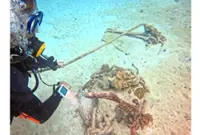Extending a hand: Daniel giving a thumbs up during his fifth blood donation recently.
OVER the past two years, I have donated blood five times, and every session has deepened my resolve to help others.
My first encounter with blood donation occurred when I was 19, at my university. A local hospital organised a blood drive on campus, inviting students and staff to participate.





